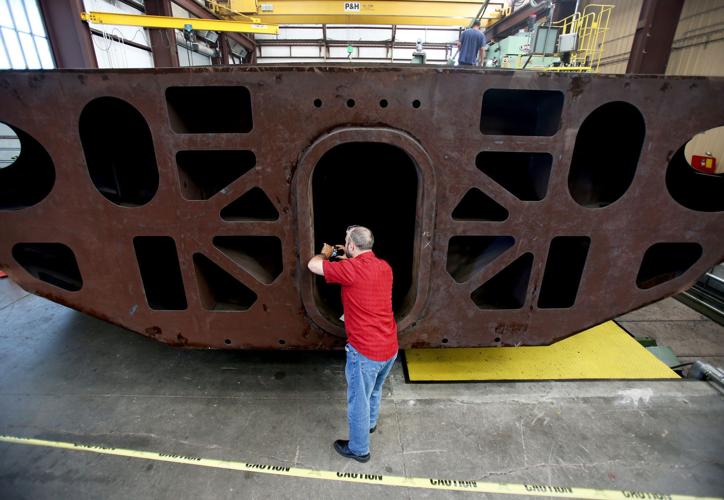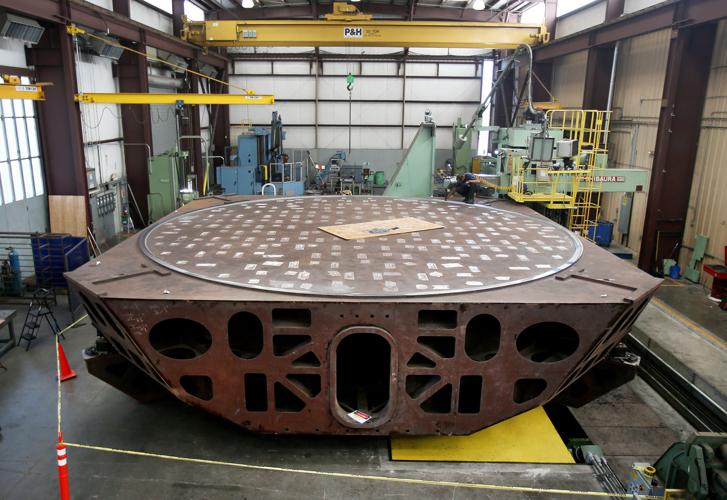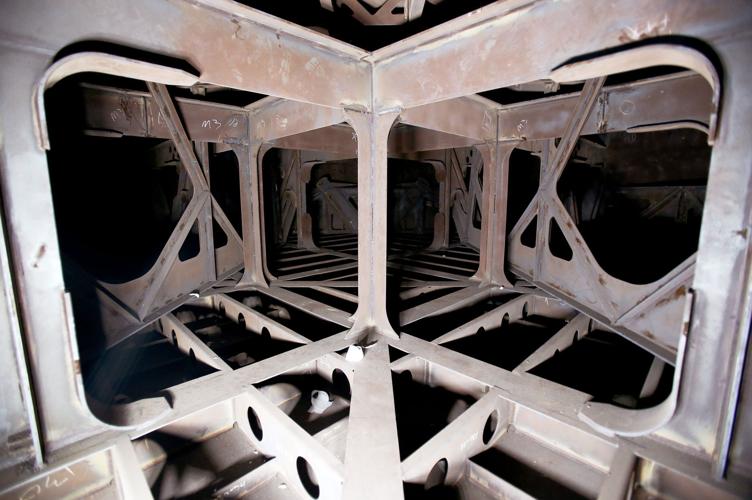The Large Synoptic Survey Telescope, the next big thing in astronomy, is a worldwide effort, with a telescope mount from Spain, a dome from Italy, a coating chamber from Germany and a site in the Andean foothills of Chile.
The heart of the project remains in Tucson.
The project, known by its initials LSST, was dreamed up in Tucson and retains its headquarters here.
A variety of local vendors, from the heavy-metal experts at CAID Industries to the electronics assemblers at Beacon Group, have a piece of the financial action.
The project began with an idea for a novel mirror that contains the primary and tertiary surfaces of the light path on a single surface. That task, conceived and perfected by the astronomical mirror builders and polishers at Steward Observatory and the College of Optical Sciences, is the $20 million heart of a plan to take a 10-year movie of the cosmos.
Coupled with the largest camera in the world — a $165-million, 3.2-billion-pixel marvel being developed at SLAC National Accelerator Laboratory in Menlo Park, California — it will spend 10 years imaging the entire night sky visible from Chile every three nights and recording all that moves, brightens, darkens, changes or remains constant.
It will track the orbits of asteroids and watch explosions of supernovae. It will provide a map of the galaxies and clues to the mysterious phenomena of dark matter and dark energy. It will find some things we’ve never seen before.
Its giant (27.6-foot diameter) mirror, cast in what is now known as the Richard F. Caris Mirror Lab beneath the bleachers of Arizona Stadium, needs to be handled with care and for that, LSST turned to Tucson’s CAID Industries.
At first, LSST asked CAID to build a box for it — a metal box that would delicately support the mirror’s size and weight without breaking it, as it makes its way from Tucson to a mountaintop in Chile by crane, truck and ship.
CAID had experience in building shipping boxes for similar-sized mirrors manufactured at the University of Arizona’s mirror lab.
LSST decided to add to its CAID contract and have it build a mirror cell that will become a permanent part of the telescope. It is currently milling and machining that 57,000-pound piece of weathering steel.
Fabricating large metal structures is no big challenge for CAID, but working within the precision tolerances demanded by astronomy is, said Keath Beifus, CAID project engineer.
“We work within these tolerances all the time on things you can lift,” he said.
The top surface of the cell, a 7-foot-tall square that is 30 feet on each side, can’t vary by more than the width of a piece of paper, he said.
The design requires “4,440 machined features,” said Beifus — precision-drilled holes for wiring and plumbing to accommodate actuators that perfect the mirror’s shape and the fans and coolant-filled tubes that keep its temperature constant. Those are currently being drilled.
The entire cell must also be airtight. It has a round metal rim that, when mated with the coating-chamber dome being fabricated in Dresden, Germany, will create a vacuum needed for coating the glass with a reflective surface.
That meant extra attention paid to all the welded joints to prevent air pockets and installation of a submarine-style access door, Beifus said.
CAID is also building the cart that will hold the mirror and cell when it needs to be detached from the mirror mount and rolled on rails to the mirror-coating chamber.
It is also building a surrogate mirror made of metal that will be used to test the cell’s ability to mold the mirror into shape before it trusts it with the fragile glass surface.
CAID’s current contracts with LSST total more than $3.4 million, and it has been asked to do another phase of the project — the integration of the parts that will turn the “big empty behemoth” of a cell into a functioning platform for the mirror, said Bill Gressler, telescope and site manager for LSST.
About a dozen other local vendors are contributing $600,000 worth of parts and pieces to the telescope, with assembly of a variety of components being done in Tucson, where 72 LSST employees now work in the North Cherry Avenue building that also houses the National Optical Astronomy Observatory.
The $400,000 contract for remodeling the space to accommodate LSST went to Tucson-based Division II Construction Co.
LSST is managed for the National Science Foundation (NSF) by the Association of Universities for Research in Astronomy (AURA).
NSF has committed $473 million for construction of the telescope, scheduled for completion by the end of 2019.
The $165 million camera is funded by the U.S. Department of Energy. Arizona Optical Systems is building mirrors for the camera, and sensors are being provided by the UA’s Imaging Technology Lab.
Some of the assembly work being done at the AURA center on North Cherry has been subcontracted to the Beacon Group, a Tucson nonprofit that provides work for people with significant disabilities.
Greg Natvig, vice president for business operations at Beacon, said it does a lot of assembly work for local hi-tech companies. “We do that sort of thing every day,” he said.
Gressler said LSST has used the Beacon Group for most of its Inner Loop Controller work.
“It’s been a great relationship where many times we’ve had critical orders that needed short response times,” he said.
Gressler said he enjoys working with local companies and the project benefits from that proximity. A lot of Gressler’s site visits involve long airline flights.
“The nicest thing, aside from our really good relationship with CAID, is going there in your car and coming home to your office the same day,” he said.
Contracting locally also saves a lot in shipping costs, he said. LSST has already had to move its main mirror from the UA’s mirror lab to a hangar near the airport. It will bring it to CAID, just a few blocks away, for integration with the cell built there.
It will be tested again back at the mirror lab before the cell and mirror are shipped in separate containers to Chile, where an observatory is under construction on a peak called Cerro Pachón, near the NOAO-managed Cerro Tololo Observatory, 50 miles east of the port of La Serena.
When the cell, mirror, camera and mount are all put together, the telescope will weigh 350 tons and will move more quickly and more often on its axes than any telescope ever built.
CAID’s cell will look a lot nicer before then, said Beifus.
It oxidized to a rusting tanker color after being heated and water-cooled to prevent any “relaxation” of its shape. It will be painted teal blue before it is shipped to Chile, said Beifus.









